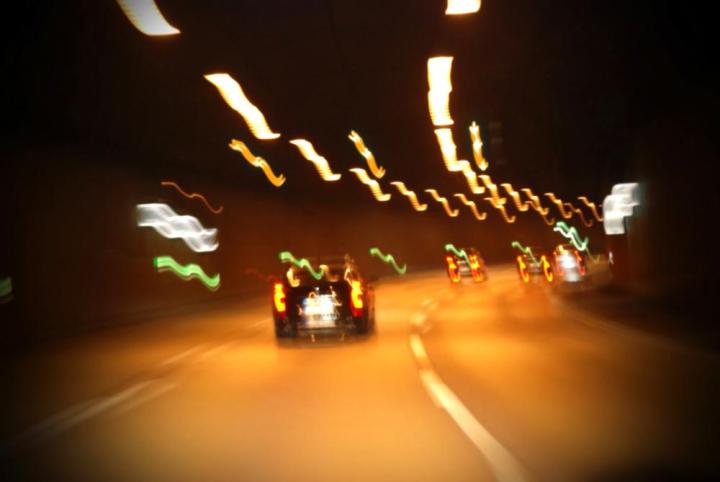
It’s fairly easy to tell that the guy doing 95 while peeing out of the sunroof is probably a bit too wasted to be piloting a motor vehicle, but pretty soon, people won’t even have to drive like buffoons to get caught driving drunk.
Thanks to a newly-developed remote sensing technology that relies on lasers, the fuzz might soon be able to detect the presence of alcohol vapor in a moving car without even pulling it over.
Detailed in a new open-access article in the Journal of Applied Remote Sensing, the technology has massive potential to aid in the campaign to prevent drunk driving.
The crazy thing is that, believe it or not, this kind of remote sensing technology has actually existed for quite some time. There’s already an extensive body of research that shows how chemical compounds can be identified from afar with lasers — but up until now, the lasers used to do so weren’t “eye safe,” and could potentially cause damage if they were aimed at people. But now, thanks to recent developments in the types of lasers that can be used for remote sensing, researchers have shown that it’s possible to detect certain chemicals from afar with beams that aren’t dangerous to human peepers.
In other words, thanks to these new eye-safe lasers, this kind of remote sensing technology can now be turned at cars to help detect motorists driving under the influence of intoxicants.

To test the technology, the research team mounted the laser sensor in the window of the lab and aimed it outward toward a car that was driven past. Inside the car, they simulated alcohol vapor coming from a human lung by evaporating a water/alcohol solution with a similar concentration and temperature to vapor that would come from an intoxicated person’s breath. In these trials, the results showed that the presence of alcohol vapors could reliably be detected at concentrations of 0.1 percent and greater.
The authors note, however, that the system does have a few flaws in its current state. For starters, it can’t reliably discern where the vapor is coming from in the vehicle, so it can’t identify situations where the driver is sober and the passengers are drunk, for example. Furthermore, the laser sensors can easily be thwarted by doing things like rolling down the windows, or simply by placing solar screens on the side windows. However, the system can easily detect these kinds of situations, and if it’s ever unsure, it can still send this information to a waiting police officer and ensure the car is checked.
Other issues, including using air conditioning and fans, will reportedly be investigated in the next stages of the project, which is currently ongoing. In the future, the researchers hope to shrink the technology down into a more compact, powerful, and user-friendly device that can be used by law enforcement agencies. In it’s current state, however, the system is still a few years away from being deployed on highways, but it’s not unreasonable to think that these systems could be widely implemented in the not so distant future.
You can find out more here.




